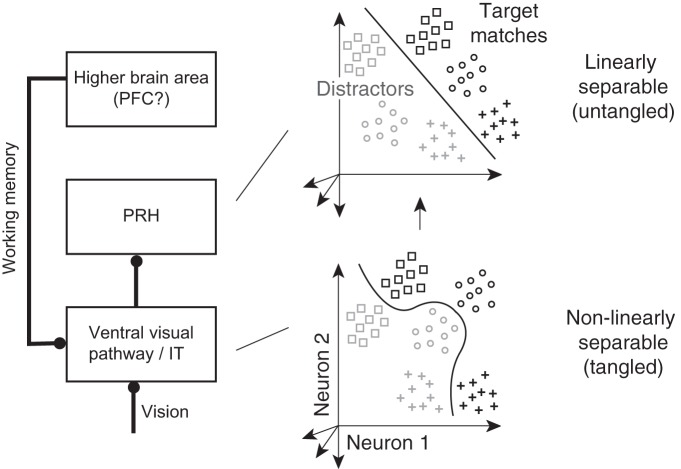Figure 1.
Untangling target match signals. Left, Previous results suggest that during visual target search, visual and working memory signals are combined within or before IT along the ventral visual pathway in a nonlinearly separable or tangled fashion, followed by computations in PRH that untangle target match information such that it is more accessible to a linear population readout. Right, Each point depicts a hypothetical population response, consisting of a vector of the spike count responses to a single condition on a single trial. Clouds of points depict the predicted dispersion across repeated presentations of the same condition due to trial-by-trial variability. The different shapes depict the hypothetical responses to different images and the two shades (black, gray) depict the hypothetical responses to target matches and distractors, respectively. A target-switching task (such as the delayed-match-to-sample task, Fig. 2) requires discriminating the same objects presented as target matches and as distractors. In a tangled representation (bottom), a nonlinear decision boundary (corresponding to a nonlinear population readout) is required to separate these two groups whereas an untangled representation (top) can be read out with a linear decision boundary (corresponding to a linear population readout). As reported by Pagan et al. (2013), target match signals are more tangled in IT and more untangled in PRH.

